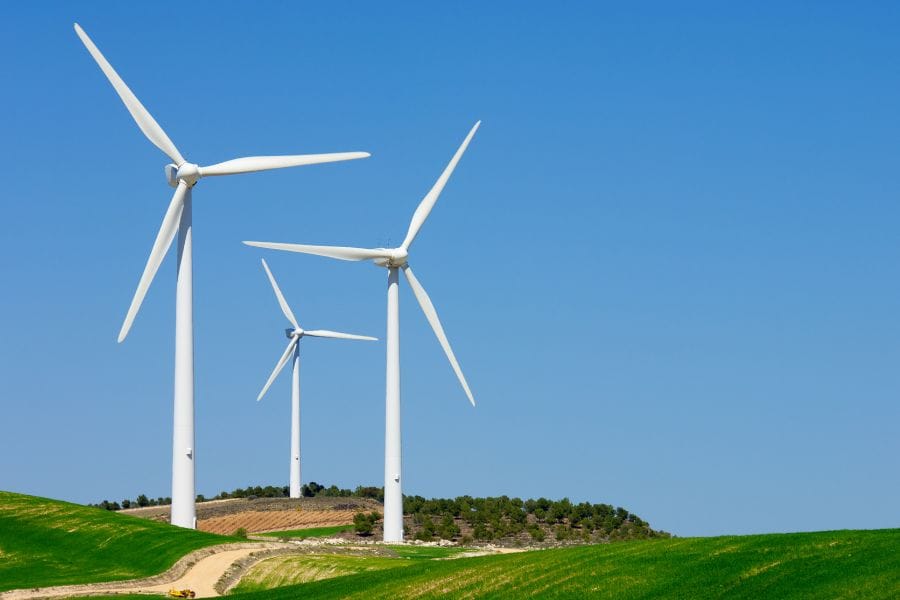The clean energy sector added nearly 150,000 jobs in 2023, growing three times faster than overall U.S. employment. While traditional industries face uncertainty, clean energy jobs offer stability, competitive wages, and the opportunity to build a career that makes a meaningful difference for our environment and communities.
Whether you’re a recent graduate exploring career opportunities, a skilled worker considering a transition, or someone passionate about combating climate change, the clean energy economy presents unprecedented opportunities across diverse skill sets and education levels. From hands-on technical positions to cutting-edge research roles, this rapidly expanding industry needs workers at every level to accelerate America’s energy transition.
In this comprehensive guide, we’ll explore what clean energy jobs entail, analyze market growth trends, examine different career paths, and provide actionable steps for entering this dynamic sector. You’ll discover how to position yourself for success in an industry that’s not just creating jobs, but reshaping the future of work itself.
What Are Clean Energy Jobs?
Clean energy jobs encompass roles in renewable energy generation, energy efficiency, sustainable transportation, and green infrastructure. These positions support the transition away from fossil fuels toward sustainable energy sources like solar, wind, hydroelectric, and geothermal power.
The scope of clean energy employment extends far beyond what many people initially imagine. Core segments include:
Renewable Energy Generation: Solar photovoltaic installers, wind turbine technicians, hydroelectric plant operators, and geothermal system specialists who design, build, and maintain power generation facilities.
Energy Efficiency: Professionals who focus on reducing energy consumption through building retrofits, smart grid implementation, and advanced HVAC systems. This includes energy auditors, efficiency consultants, and specialized contractors.
Sustainable Transportation: Workers supporting the electric vehicle revolution, including EV mechanics, charging infrastructure technicians, and battery specialists who develop next-generation storage solutions.
Green Infrastructure: Teams that build and maintain the backbone of clean energy systems, from utility-scale battery storage to smart grid technology and sustainable building design.
Jobs span across manufacturing, installation, maintenance, research and development, and project management in clean energy sectors. Positions include solar panel installers, wind turbine technicians, energy auditors, electric vehicle mechanics, and battery storage specialists, but the industry also needs business development professionals, human resources specialists, and marketing teams to support rapid growth.
Clean Energy Job Market Growth and Opportunities
The numbers tell a compelling story of an industry in rapid expansion. Clean energy sector added nearly 150,000 jobs in 2023, growing three times faster than overall U.S. employment. This growth isn’t a temporary surge, it represents a fundamental shift in how America produces and consumes power.
The Inflation Reduction Act has driven 340+ clean energy projects across 40 states, creating 109,000+ jobs and attracting $126 billion in private investment. These aren’t just job postings, they represent real opportunities for workers to join teams building America’s energy future.
Energy efficiency leads clean energy employment, with manufacturing and repair services comprising nearly 60% of new positions. This sector offers particularly strong prospects for workers with construction backgrounds, as many efficiency upgrades require building trades skills adapted for clean energy applications.
Looking ahead, first-year IRA projects are expected to generate 400,000+ jobs and hundreds of billions in wages nationwide. As of 2023, approximately 3.1 million workers are employed in energy innovation jobs across all 50 states, demonstrating that clean energy opportunities exist in every region.
The job market data reveals several key trends:
- Manufacturing roles are expanding rapidly as companies bring production back to the United States
- Installation and maintenance positions offer immediate entry points for skilled trades workers
- Engineering and research positions continue growing as technology advances
- Business and administrative roles support industry expansion across all segments
A 2021 labor supply analysis highlighted projected demand for over 40,000 electricians, 9,000 welders, and 7,000 wind technicians by 2030, underscoring the critical need for workers with specific skills in these technical trades.
Types of Clean Energy Careers
The diversity of career paths in clean energy means there’s likely a position that matches your interests, skills, and background. Let’s explore the major categories of opportunities available.
Technical and Skilled Trades
Technical positions form the backbone of clean energy deployment, offering hands-on careers with strong job security and growth potential.
Installation and Maintenance Specialists: Solar photovoltaic installers, wind turbine technicians, and hydroelectric plant operators work directly with renewable energy systems. These roles typically require specialized training programs but offer excellent entry points for workers with construction or electrical backgrounds.
Electrical and Grid Specialists: Electricians specializing in renewable energy systems and smart grid technology are in particularly high demand. These professionals adapt traditional electrical skills for clean energy applications, working on everything from residential solar installations to utility-scale storage systems.
HVAC and Building Systems: HVAC technicians focused on energy-efficient heating, cooling, and ventilation systems represent a growing segment. As buildings become more energy-efficient, these specialists help reduce overall energy consumption through advanced climate control systems.
Manufacturing and Fabrication: Welders and metal fabricators supporting clean energy equipment manufacturing work in facilities producing everything from solar panel frames to wind turbine components. These positions often offer stable employment with benefits and opportunities for advancement.
Energy Storage: Battery technicians and energy storage system specialists work with cutting-edge technology to manage grid stability and store renewable energy for later use. This emerging field offers significant growth potential as storage becomes increasingly critical to grid reliability.
Engineering and Research
Engineering roles drive innovation and technological advancement across the clean energy sector, requiring specific skills but offering excellent compensation and career development opportunities.
Renewable Energy Engineers: These professionals design solar farms, wind installations, and geothermal systems. They analyze sites, optimize system performance, and lead project development from concept through construction.
Environmental Engineers: Environmental engineers develop sustainable energy solutions and conduct impact assessments to ensure clean energy projects meet environmental standards while maximizing benefits to local communities.
Marine Engineers and Naval Architects: With offshore wind expanding rapidly, marine engineers and naval architects working on offshore wind and wave energy projects represent a specialized but growing field requiring unique technical expertise.
Materials and Chemical Sciences: Biochemists and materials scientists advance clean energy technologies by developing more efficient solar cells, stronger wind turbine materials, and improved battery chemistries.
Cybersecurity and Data: Information security analysts protecting clean energy infrastructure from cyber threats work at the intersection of energy and digital security, a critical field as power systems become increasingly connected.
Business and Administration
Clean energy companies need skilled business professionals to manage growth, develop markets, and ensure efficient operations across all aspects of the industry.
Project Management: Project managers overseeing renewable energy installations and grid modernization coordinate complex, multi-year projects involving diverse teams of engineers, contractors, and regulatory agencies.
Sales and Marketing: Sales representatives promoting clean energy products and services work directly with customers to educate them about options and help them make informed decisions about energy investments.
Consulting and Analysis: Energy auditors and efficiency consultants helping reduce energy consumption work with residential and commercial customers to identify opportunities for energy savings and recommend cost-effective improvements.
Policy and Regulatory: Policy analysts and regulatory specialists navigating clean energy legislation help companies understand and comply with evolving regulations while advocating for supportive policy frameworks.
Finance and Investment: Financial analysts and investment specialists in green energy funding analyze project economics, structure financing deals, and help secure capital for clean energy development.

Benefits and Compensation in Clean Energy Jobs
One of the most compelling aspects of clean energy careers is the combination of competitive compensation, strong benefits, and high job satisfaction that comes from meaningful work.
Clean energy jobs paid 25% more than the national median wage in 2019, and this wage premium has continued as demand for skilled workers outpaces supply. Recent data shows that 48% of clean energy professionals reported a pay raise in 2025, compared to just 35% five years prior, with 73% expecting a raise at some point this year.
Nine in ten clean energy workers report high job satisfaction and career fulfillment, significantly higher than national averages across industries. This satisfaction stems from multiple factors: competitive wages, opportunities for advancement, and the knowledge that their work contributes to addressing climate change and building a more sustainable future.
Comprehensive benefits packages typically include healthcare, retirement plans, and paid vacation time. Many employers also offer:
- Flexible work schedules and remote work options where applicable
- Professional development and training programs to build new skills
- Tuition reimbursement for continuing education
- Performance bonuses tied to project completion or company goals
- Stock options or profit-sharing in growing companies
Job security is particularly strong in clean energy due to several factors. Government support through legislation like the Inflation Reduction Act provides long-term policy stability. Growing demand for clean energy driven by climate concerns and energy independence goals creates sustained market growth. Additionally, most clean energy jobs cannot be easily automated or outsourced, providing inherent security for workers.
The industry also offers significant opportunities for career advancement. As companies grow rapidly, employees often take on increased responsibilities and advance to leadership positions faster than in more established industries. Many professionals report being able to accelerate their careers by developing expertise in emerging technologies and taking on challenging projects.
How to Enter the Clean Energy Job Market
Breaking into clean energy careers requires strategic planning, but multiple pathways exist depending on your background and career goals. The application process typically involves demonstrating both technical capabilities and passion for clean energy mission.
Identify Transferable Skills: Many clean energy positions build on skills from traditional energy, construction, manufacturing, or technical backgrounds. Electricians can transition to solar installation, HVAC technicians can specialize in energy-efficient systems, and project managers can apply their skills to renewable energy development.
Pursue Specialized Training: Training programs through community colleges, trade schools, and apprenticeship programs provide essential technical knowledge for specific clean energy roles. Many programs are designed for working adults and offer evening or weekend classes to accommodate different schedules.
Obtain Relevant Certifications: Industry certifications demonstrate competency and commitment to employers. Key certifications include NABCEP for solar installation, wind turbine technician credentials from manufacturers, and energy auditor certifications from professional organizations.
Explore Internship and Apprenticeship Programs: Clean energy internship programs offered by organizations like MassCEC and federal agencies provide hands-on experience and direct pathways to employment. Many programs include mentoring, regular updates on industry trends, and networking opportunities with professionals.
Build Your Network: The clean energy community is collaborative and supportive of newcomers. Attend industry events, join professional associations, and participate in online forums to connect with potential employers and mentors who can provide guidance and job leads.
Research Companies and Organizations: Study job postings from clean energy companies to understand required qualifications and prepare your resume accordingly. Many organizations pride themselves on their mission-driven culture and look for candidates who share their commitment to environmental progress.
Consider Government and Nonprofit Roles: Federal agencies, state governments, and environmental organizations offer clean energy positions with excellent benefits and job security. These roles often provide opportunities to shape policy and lead large-scale initiatives.
Develop Technical and Soft Skills: While technical competency is essential, clean energy employers also value communication skills, problem-solving abilities, and teamwork. Many positions require collaboration across departments and with external stakeholders, making interpersonal skills critical for success.
Regional Clean Energy Employment Hubs
Clean energy opportunities exist nationwide, but certain regions have emerged as employment hubs due to favorable policies, natural resources, or concentrated industry presence.
Maine’s Growing Clean Energy Sector: Maine expects to create thousands of clean energy jobs over the next decade, building on its current base of nearly 15,600 workers. The state’s offshore wind resources and supportive policies create particular opportunities in marine engineering and coastal construction. Over 140,000 workers in Maine alone have skills transferable to clean energy careers, indicating significant potential for workforce transition.
Massachusetts Leadership: Massachusetts leads with comprehensive clean energy job boards and internship programs through MassCEC. The state’s robust education-employer partnerships create clear pathways from training programs to employment, while its diverse clean energy economy supports careers across all sectors from manufacturing to research.
Federal Employment Opportunities: Federal agencies like the Department of Energy’s Office of Energy Efficiency and Renewable Energy (EERE) employ scientists, engineers, and business professionals across research and development, policy development, and technology deployment. These positions offer competitive salaries, excellent benefits, and the opportunity to shape national energy policy.
Regional Industry Clusters: States like California, Texas, and Iowa have developed strong wind and solar industries that support thousands of jobs in manufacturing, installation, and maintenance. These clusters create ecosystems where skills and knowledge transfer between companies, providing workers with multiple career options within the same region.
Emerging Opportunities: Offshore wind development along the East and West coasts is creating entirely new regional employment hubs in ports and coastal communities. Battery manufacturing facilities are being built across the Midwest and Southeast, creating thousands of manufacturing jobs in areas that can leverage existing automotive and industrial expertise.
One in two clean energy employers are actively expanding their workforce to meet growing demand, indicating robust hiring activity across regions. This expansion includes both entry-level positions for newcomers and senior roles for experienced professionals looking to transition into the sector.
Future Outlook for Clean Energy Employment
The trajectory for clean energy employment points toward sustained, long-term growth driven by policy support, technological advancement, and mounting climate urgency.
Clean energy jobs have increased 14% over three years, now surpassing the number of nurses nationwide. This comparison illustrates the sector’s scale and demonstrates that clean energy has become a major employment category comparable to traditional large-scale professions.
Continued government investment through legislation like the IRA ensures sustained job growth for the next decade. The law’s provisions extend through the 2020s, providing policy certainty that encourages private sector investment and long-term career planning. Additional federal and state policies continue supporting workforce development and infrastructure deployment.
Emerging technologies in battery storage, hydrogen fuel, and carbon capture create new career opportunities that didn’t exist even five years ago. These technologies require interdisciplinary skills combining traditional engineering with cutting-edge science, offering exciting prospects for students and professionals willing to develop expertise in emerging fields.
Battery Storage and Grid Integration: As renewable energy generation grows, the need for storage solutions creates demand for electrical engineers, software developers, and technicians who can design, install, and maintain large-scale battery systems.
Hydrogen Economy Development: Green hydrogen production for industrial processes and transportation fuel is beginning to scale, creating opportunities for chemical engineers, process technicians, and safety specialists.
Carbon Capture and Utilization: Technologies to capture and use carbon dioxide from industrial processes require workers with backgrounds in chemistry, engineering, and environmental science.
Climate change urgency and rising disaster costs drive increased investment in clean energy solutions as communities seek resilience and energy independence. This trend accelerates job creation in both mitigation technologies (renewable energy, efficiency) and adaptation solutions (resilient infrastructure, backup power systems).
Challenges and Considerations: While growth prospects are strong, the industry faces challenges including skills gaps, supply chain constraints, and potential policy uncertainty. Workers entering the field should prepare for continued learning and adaptation as technologies and markets evolve.
International competition and energy independence goals further accelerate clean energy job creation as countries worldwide invest in domestic clean energy manufacturing and deployment capabilities. This global trend supports long-term job security for U.S. workers as the country builds its clean energy industrial base.
The clean energy transition represents one of the largest economic transformations in modern history, comparable to the industrial revolution or the development of the internet economy. Workers who position themselves in this sector today are likely to benefit from decades of growth and opportunity as the economy continues its shift toward sustainability.
For those considering a clean energy career, the message is clear: the industry offers not just jobs, but careers with purpose, security, and growth potential. Whether you’re interested in hands-on technical work, cutting-edge research, or business leadership, clean energy provides pathways to build a meaningful career while contributing to a more sustainable future.
The transition to clean energy isn’t just an environmental necessity—it’s an economic opportunity that’s creating prosperity for workers, communities, and the country as a whole. By joining this transformation, you’re not just finding a job; you’re helping build the energy system that will power America’s future while creating a better world for future generations.
Find Your Next Clean Energy Job with Talentprise
Talentprise is an AI-powered recruiting platform designed to help clean energy workers, whether technical experts, project managers, or emerging graduates, discover the roles that truly match their skills, experience, and goals.
Unlike traditional job boards, Talentprise doesn’t rely on endless applications or keyword stuffing. Instead, it uses intelligent AI matching technology to align your personal profile with employer job descriptions, ensuring a precise fit between talent and opportunity. While job seekers benefit from personalized job matching and increased visibility, employers use Talentprise to automatically surface candidates whose skills and background perfectly match their job requirements.
If you’re ready to take the next step in your clean energy career, let Talentprise help you get there faster, smarter, and with purpose.
👉 Get started today at Talentprise and power your future.

Editorial Team
Our team is fueled by a passion for crafting valuable content that enriches the experiences of our users, customers, and visitors. We meticulously select meaningful and unbiased topics ranging from tips and guides to challenges and the latest in technology, trends, and job market insights. All curated with care and affection!
Get Discovered by Employers Hiring Right Now
Upload your resume and join our free platform, where global employers and recruiters search for talent like you. Our AI-powered matching ensures you’re seen by the right people, fast.




